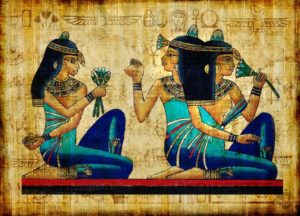How is Egyptian Blue linked to energy efficiency? « Back to Questions List
|
Egyptian blue is an ancient color developed by Egyptians. The color was derived thousands of years ago from calcium copper silicate. Egyptians used the Egyptian blue to draw pictures of gods and kings. It is now identified that Egyptian blue can be used as an energy efficient pigment to cool rooftops and walls. The pigment can also be used for solar electricity generation. It was discovered earlier that Egyptian blue is capable of absorbing visible light and then emitting light in the near infra-red region. What is now observed in the study is that the fluorescence of the pigment is more than ten times stronger than what was thought earlier. The study was conducted by the researchers at the Department of Energy's Lawrence Berkeley National Laboratory (Berkeley Lab). The study was conducted by exposing surfaces coated with Egyptian blue and similar compounds to sunlight and by measuring the temperatures of surfaces exposed. The study has revealed that Egyptian blue emits nearly 100 percent as many photons as they absorb. The energy efficiency of the process is up to 70%. Though emission is 100 percentage of absorption, the energy level is lower as the infrared photons carry less energy than visible photons. The research paper was published in the Journal of Applied Physics. Apart from the cooling potential, Egyptian blue can be employed for producing solar energy. If windows are tinted with the color, photovoltaic cells connected to the edges can convert the fluoresced near-infrared energy to electricity. White color is the most preferred choice for keeping a building cool and reducing energy use for cooling the building. White color achieves this by reflecting sunlight. But white colored roof tops are not normally preferred as it is less attractive. Berkeley Lab researchers had earlier proved that fluorescent ruby red pigments is an effective substitute for while color. Further, it was also identified that fluorescent green and black colors can be produced with yellow and orange co-pigments. The present discovery gives some more options for building owners for effective cooling of rooftops.
The application of the discovery is in reflective roofs and walls of buildings and cars. Electricity used for air conditioning of buildings and cars can be reduced by employing the method. It aids to mitigate the urban heat island effect. By reflecting the sun's rays back to space, these materials reduce release of heat into the atmosphere thereby keeping the planet cool and preventing global warming to certain extent by offsetting greenhouse gas emissions. What is meant by flotovoltaics( floating photovoltaics)?Why is the International Renewable Energy Agency (IRENA) important? |

